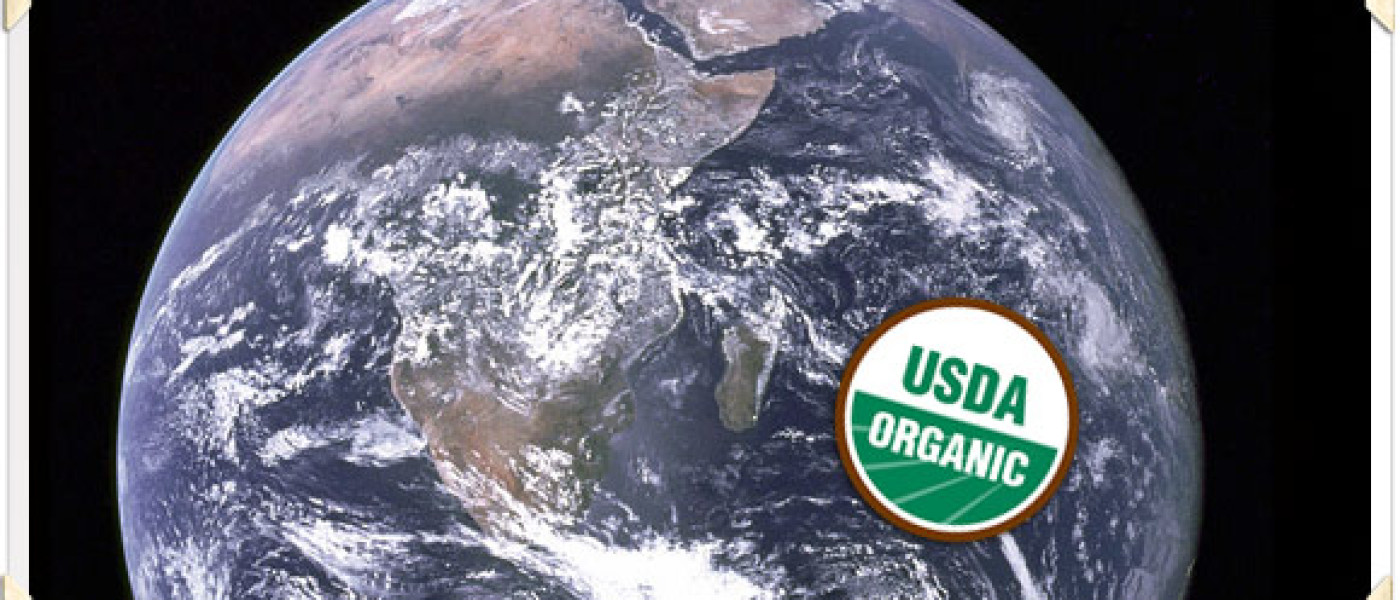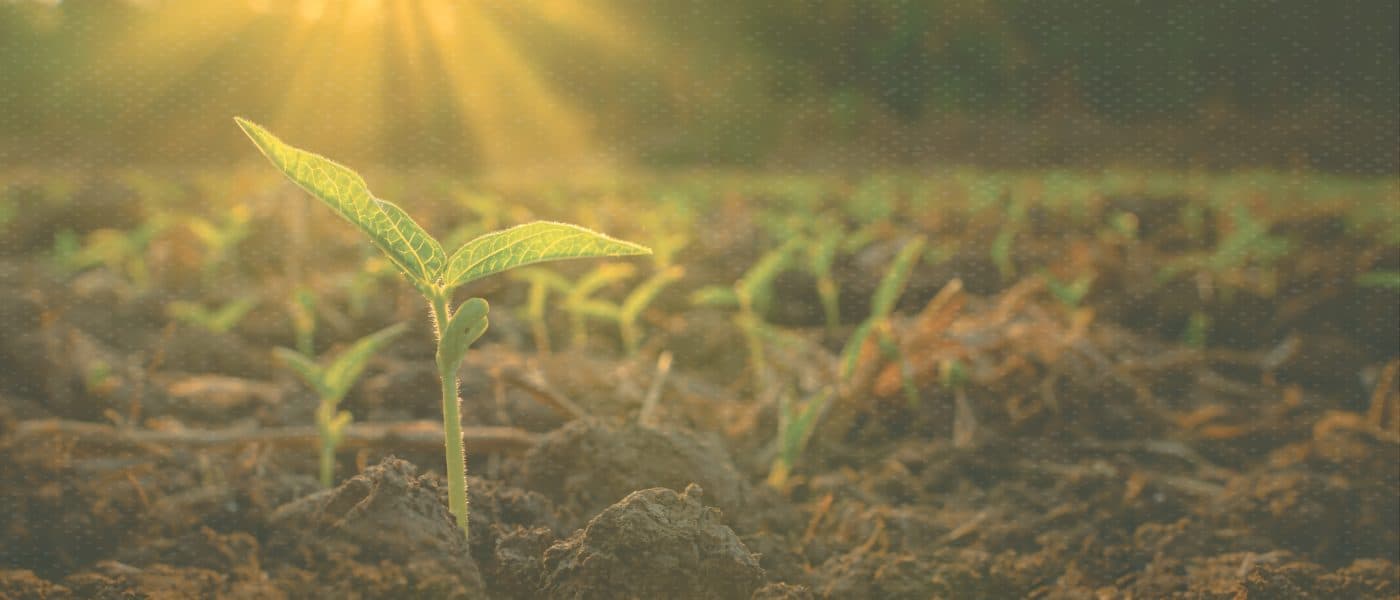August 2012
Dear Farm Aid,
I’m a big supporter of organic agriculture, but some of my friends say it isn’t a practical way to feed the world. Is that true?
Thanks!
Janet N.
Grand Island, NE
It’s been the subject of many controversies: Is organic food worth the extra cost? Does it taste better? Is it better for the environment? Can it feed the world?
You’re not alone in asking these questions, Janet. But finding the answers is darn-near impossible without understanding what organic is. So let’s take some time first to explore what, precisely, lies behind the word organic.
Deep Roots
Most people assume organic farming is either a product of the 1960s or else a most ancient and traditional form of agriculture. Both are wrong!
In fact, the main tenets of organic agriculture were developed in 19th century Britain, in response to a rising field of crop science that isolated nitrogen (N), phosphorous (P) and potassium (K) as key promoters of plant growth. Soil nutrients had never been identified this way before. The new “NPK” mentality viewed soil as an inert medium whose importance was to deliver these elements to the crop. Emerging just in time for the Industrial Revolution, the development of synthetic, inorganic fertilizers was encouraged by agriculturalists adopting this view.
Enter early organic thinkers, who developed a system in sharp contrast to the one spreading across the U.S. and Europe. Organic advocates emphasized soil biology—insisting that soil was not inert, but a complex living entity that was essential to plant health, animal health and thus, human health. And while specialization hastened in the mainstream, organic philosophers emphasized diversity on the farm. Integrating plant and animal systems was essential, and a core practice was using their organic waste to maintain soil fertility and build soil organic matter via composting.
Modern Organic
In the early 20th century, organic “hopped the pond” and landed in America—in Pennsylvania, to be exact. After meeting with leading organic advocates in Britain, J. I. Rodale further developed organic practices and founded the Rodale Institute (a Farm Aid partner!), to study the link between healthy soil, healthy food and healthy people.
After World War II, a grassroots movement of organic farms grew in the shadows of industrial agriculture’s churning growth. By the 1980s, the federal government saw a need for national standards and Congress passed the Organic Foods Production Act in the 1990 Farm Bill. The U.S. Department of Agriculture (USDA) issued final rules guiding organic production, processing and labeling in 2000.
While organic standards are continuously developed and debated, same basics remain. Certified organic farmers are restricted from using synthetic fertilizers and pesticides, sewage sludge and genetically engineered seeds, and are encouraged to employ biological systems like natural predators and crop rotations to control pests. They must employ adequate soil management, buffering between their fields and neighboring conventional farms, substantial recordkeeping and more. (See our Food Labeling page for more on the USDA organic label.)
Feeding the world
So now that we have some understanding of organic, let’s dig into this question of feeding the world.
With the world’s population expected to reach 9 billion by 2050, concern about feeding the world is generally focused on the question of farm productivity, or the agricultural output per unit of land, such as bushels per acre. But farmers already produce more than twice the caloric needs of the planet, and still 1 billion people go hungry each day. Meanwhile, countries like the U.S. face a formidable (and costly) obesity crisis, even while we Americans waste 40% — or $165 billion worth — of our food annually.
All this to say that feeding the world isn’t just a matter of productivity—not even close. Many dynamics—including the stability of food production, food access and availability, distribution systems, affordability, and nutrition—will foster sustainable, widespread food security. Unless we address fundamental problems in our food system, “feeding the world” won’t be possible no matter how much food we produce.
Organic versus Conventional
Still, it’s worth considering how different farm systems measure up. Farmers put a lot of sweat and soul into working the land and, like anyone, want the most bang for their proverbial buck.
A recent study published this April in Nature did an exhaustive review of organic and conventional crop trials. It found that organic yields were often lower than those of conventional counterparts, and that the widest gap was between organic and conventionally grown cereal crops like wheat and corn. Yields for legumes and perennial crops like fruits and vegetables were similar, though organic often trailed.[1] Why?
The advances of conventional agriculture have unquestionably bolstered farm productivity. Today’s farmer gets far more out of an acre of land than he did a century ago, especially for row crops like wheat, corn and soybeans. That’s the result of decades of research, billions of investment dollars and a slew of yield-driven federal farm policies. It’s also due in large part to synthetic fertilizer, which many experts cite as the most important influence on crop yield increases (though it is extremely energy-intensive to produce and its overuse has been responsible for significant environmental damage).
Organic agriculture traditionally strives for a broader goal than yield, though: soil health. That approach has generated some interesting results. Studies are finding that organic systems fair better under environmental stress. In fact, the longest running research trial comparing organic and conventional systems, run by the Rodale Institute, has examined crop plots side by side for three decades. It has repeatedly found that organic crops outperform conventional ones in drought and flood conditions.[2] And that magic is in the soil.
It’s the soil.
The way soil functions on every inch of a farm affects water quality, air quality and the land’s productivity. By managing for soil quality and high soil organic matter, organic farmers increase soil’s water and nutrient holding capacity, facilitate water infiltration, and strengthen the soil’s structure. All of that, in turn, enhances productivity and buffers against severe events like droughts, floods and even blights and diseases. In addition, increasing soil organic matter can reduce atmospheric CO2 levels, an important concern for global climate change.
It is for this reason that the UN Food and Agriculture Organization (FAO) supports organic agriculture and other “agro-ecological” farming systems as essential strategies for achieving food security worldwide. While farmers can’t control the weather, how they manage the soil can buttress agriculture’s resilience during disasters. With scientists predicting an increased frequency of weather events like this year’s devastating drought, organic farming may be essential for the long-term viability of agriculture worldwide.
Most researchers are concluding that organic and conventional systems have a great deal to learn from each other, and that true food security—meaning feeding everyone in the world over the long haul—will require a diversity of strategies and better soil stewardship. Organic agriculture—and other agro-ecological farming systems—will need to receive their fair share of the research and development dollars to help us meet this challenge (right now they get just 3% of the funding conventional agriculture receives!). It is better to invest in conservation and soil stewardship now, than to pay the costs of disasters down the road, burdening young farmers and future generations. It is better for farmers to diversify their businesses and spread risk across many different crop and animal enterprises, than to hedge their income on one crop. Those are just some of the lessons of organic agriculture.
Long story, short: we can’t feed the world without healthy soil. Each year, the US loses about 3 tons of topsoil per acre, and with that goes the productive capacity of our land to deliver the bounty of crops we enjoy every day. It can take up to 500 years to build back just one inch of topsoil. If we project down the road even a couple of decades, it’s clear that the status quo just won’t cut it.
So, yes Janet. You can still feel proud of supporting organic agriculture. We need forward-thinking, innovative strategies of all sorts to confront the challenges facing food production in the future.
Sources
1. McGill University. “Can organic food feed the world? New study sheds light on debate over organic vs. conventional agriculture.” ScienceDaily, 25 Apr. 2012.http://www.sciencedaily.com/releases/2012/04/120425140114.htm
2. Rodale Institute (2012) “30 Years of the Farming Systems Trial.”http://www.rodaleinstitute.org/fst30years
Further Reading
- Read our Farmer Hero profile of James and Ida Burkholder, Pennsylvania farmers that transitioned their dairy farm to organic methods.
- Farmers interested in transitioning to organic or other sustainable means of production should check out our Sustainable Options guide, part of the Farmer Resource Network.


